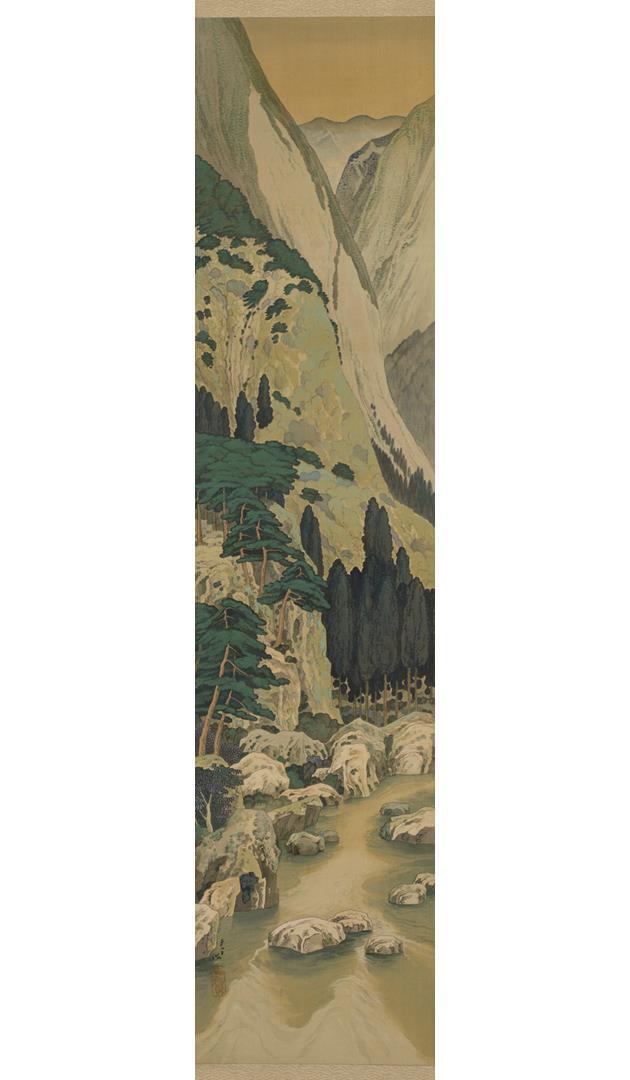Valley in Kasagi
late 1920's
Hata Teruo, although only seventeen and recently graduated from art school, was involved early on in an artistic movement whose goal was to introduce Western concepts and expression into Japanese modern painting (Nihonga). Enduring great hardships as he moved from place to place, Teruo devoted his talent to portraying humanity in all its guises, especially the miseries of the working class and the plight of downtrodden women.
From 1924 to 1929, the artist lived in a village close to Mount Kasagi, to the south of Kyoto, where he created landscapes and images of local farmers and peasants in a style influenced by Paul Gauguin.
Ink and colors on silk
79 1/8 x 15 9/16 in. (201 x 39.5 cm)
Gift of Griffith and Patricia Way, in honor of the 75th Anniversary of the Seattle Art Museum
2010.41.51
Photo: Eduardo Calderon

